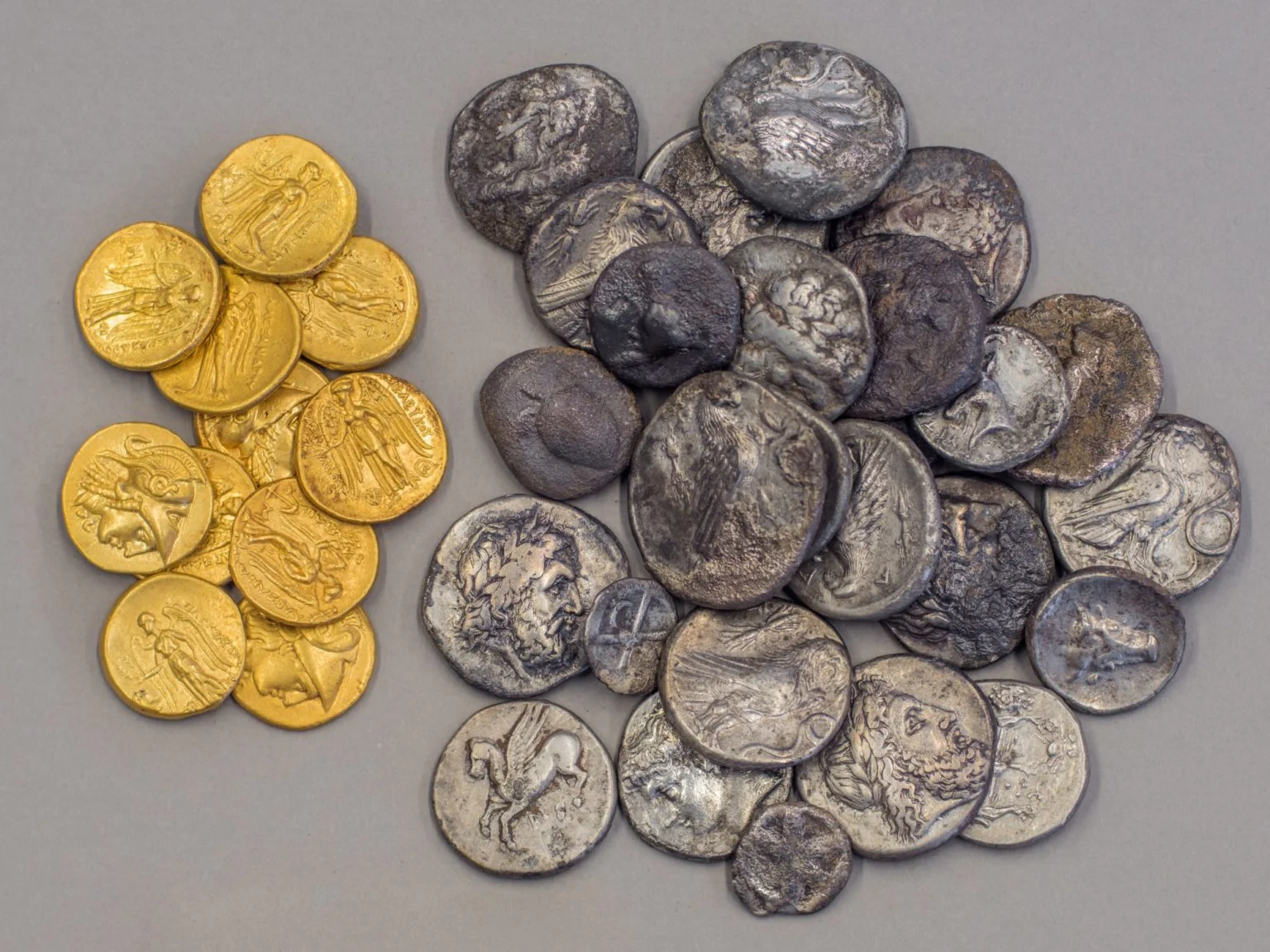Chania on Crete’s northwestern coast is best known for its beaches
and hotels that attract today’s tourists. Its history, however, goes back to
the 14th century BC and is centered on the ongoing excavations of
the Minoan Palace of Kydonia which was destroyed by an
earthquake one century later.
The Old Town of Chania
proper has yielded a cache of 37 rare coins, including eleven gold staters of Alexander. The hoard together with two
coins of Kydonia, was hidden in a space behind the wall of the acropolis
of Kydonia
probably by a mercenary between 300 and 280 BC. That is quite a find
considering one gold stater equaled a mercenary month's salary.
It has been
established that the coins were mostly minted after Alexander’s death in the name of Philip Arrhidaeus, Seleucos or
Lysimachos in different locations such as Amphipolis, Abydos, Lampsacus, etc.
The hoard also
included 15 silver staters minted in Olympia during the Olympic Games at some time in the 4th century BC. Also
one Corinthian stater of the Palace of Acarnania, a colony on the Ionian
Sea; and one stater of Praisos (on the peninsula of Sitia
at the eastern end of Crete). Further one two-drachms of Cyrene (North Africa),
two drachms of Phaistos (62
km south of Heracleion),
one drachma of Hyrtakina (in the northwest of Crete), and two pseudo-hemi-drachms
of the Aegina type found in Kydonia. Last but not least, there are two early versions from Aegina showing the sea
and land turtles.


No comments:
Post a Comment